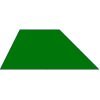Skip over navigation
Rita is making candy floss at home.
She melts a cylinder of sugar with diameter 3 cm and length 4 cm.
She then spins it into a long cylindrical strand of diameter 1 mm.
Assuming that the melting and spinning does not affect the volume of the sugar, how long is the strand of candy floss?



Or search by topic
Number and algebra
Geometry and measure
Probability and statistics
Working mathematically
Advanced mathematics
For younger learners
Candy Floss
Age 14 to 16
ShortChallenge Level 





- Problem
- Solutions
Rita is making candy floss at home.
She melts a cylinder of sugar with diameter 3 cm and length 4 cm.
She then spins it into a long cylindrical strand of diameter 1 mm.
Assuming that the melting and spinning does not affect the volume of the sugar, how long is the strand of candy floss?
You can find more short problems, arranged by curriculum topic, in our short problems collection.
You may also like
Dividing the Field
A farmer has a field which is the shape of a trapezium as illustrated below. To increase his profits he wishes to grow two different crops. To do this he would like to divide the field into two trapeziums each of equal area. How could he do this?
Two Circles
Draw two circles, each of radius 1 unit, so that each circle goes through the centre of the other one. What is the area of the overlap?
Star Gazing
Find the ratio of the outer shaded area to the inner area for a six pointed star and an eight pointed star.

